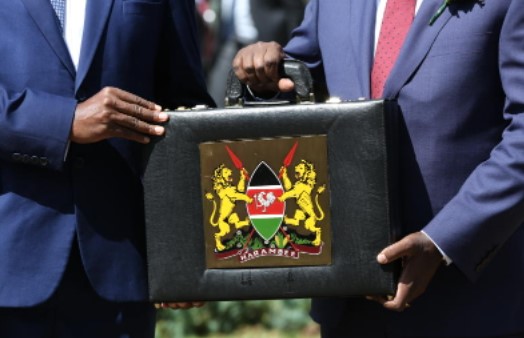The unveiling of Kenya’s new budget for the fiscal year 2023/24 has sparked confusion regarding its actual size and the allocations within it. While Parliament estimates the budget at Sh4.45 trillion, the Treasury’s 2023 Budget Policy Statement puts the figure at Sh3.599 trillion. So, what is the accurate size of Kenya’s budget, and what factors contribute to the variance?
In President William Ruto’s first budget, the three arms of government—the Executive, Parliament, and Judiciary—have been allocated funds for recurrent and development expenditures. The Executive, which encompasses ministries, departments, and agencies (MDAs), will receive the lion’s share of the allocation of Sh2.16 trillion. Parliament, consisting of the National Assembly and Senate, will receive a total of Sh40.4 billion, while the Judiciary has been allocated the least amount at Sh22.99 billion.
Read more: Taxpayers to Fund Kshs 3.6 Trillion Budget in FY 2023-2024
The 47 counties will also receive Sh385.4 billion as part of the shareable revenue. The Consolidated Fund Services (CFS), which includes debt repayment, pension obligations, international organization subscriptions, and salaries for constitutional office holders, has been allocated Sh1.836 trillion. This allocation brings the total spending in the fiscal year 2023/24 to Sh4.45 trillion.
The variance arises primarily from the treatment of debt redemptions. The Sh3.599 trillion figure excludes principal debt redemptions amounting to Sh850.1 billion, which are considered below-the-line items. Martin Masinde, the Director of the Parliamentary Budget Office, explains that below-the-line items, such as debt redemption, are not part of net external or net domestic borrowing.
Conversely, interest payments on debt are considered above-the-line recurrent expenditures, similar to wages. The assumption is that the Treasury will borrow Sh850.1 billion to refinance maturing debts, including the Eurobond, which amounts to Sh278.4 billion. In the process of refinancing, the Treasury will acquire additional loans, known as net borrowing, to finance the budget. The projected net external borrowing for the upcoming financial year is Sh131.5 billion, while net domestic borrowing is estimated at Sh532 billion.
Read more: No Borrowing to Pay Salaries, Ruto Says
While the government has never faced a cash shortage to roll over maturing debt, the possibility raises concerns. Failure to obtain sufficient funds could lead to a crisis, particularly with external debt. This situation could result in a default or higher interest rates demanded by investors due to perceived financial constraints. Refinancing risk has been evident in the recent increase in yields on Kenya’s Eurobonds.
The Treasury cancelled plans to issue an Sh139 billion ($1 billion) Eurobond after receiving bids at high-interest rates of up to 12 percent. The rise in yields indicates investors’ expectations of higher interest rates and prompts the selling of bonds. The World Bank’s Kenya Economic Update warns of the challenges Kenya might face in refinancing its $2 billion Eurobond due to the surge in refinancing risks caused by increasing borrowing costs in the external financial market.
Similarly, the domestic market reflects tight liquidity conditions, with short-term government securities and longer-dated Treasury bonds experiencing high-interest rates of 11.41 percent and upwards of 14 percent, respectively. As Kenya navigates the challenges of refinancing maturing debt and managing the budget variance, the government must carefully monitor market conditions and explore strategies to ensure the availability of funds for debt repayment and the efficient allocation of resources within the budget.
Email your news TIPS to editor@thesharpdaily.com
















